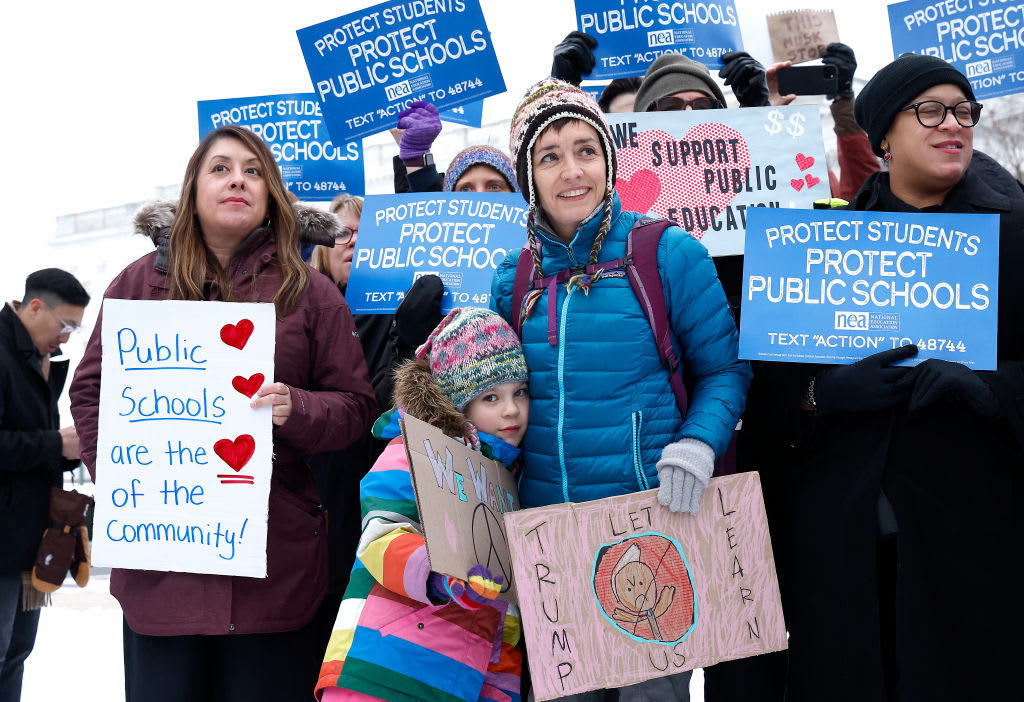Here's how much your Social Security benefits could be cut without a fix
Social Security is edging closer to a financial cliff that could eventually lead to sharp benefit cuts for 70 million Americans, with a typical couple facing an annual payment reduction of $16,500 in 2033, according to a recent analysis from the Committee for a Responsible Federal Budget.
A middle-income single worker would see their benefits cut by $8,200 per year, according to the group, a nonpartisan advocacy organization focused on fiscal issues.
The analysis is based on a dual-income couple with medium career earnings, or individual annual pay of about $63,000 a year. Notably, it also assumes that the Social Security system isn't repaired before its trust fund is projected to become insolvent in 2033 — an outcome many experts have long said is unlikely given the political consequences to both parties of slashing benefits.
The main Social Security fund, called the Old-Age and Survivors Insurance (OASI) Trust Fund, is a $2.6 trillion pool of money that funds benefits and other program costs. Because Social Security currently is paying out more in benefits than it receives through taxes, thanks partly to the massive waves of retiring baby boomers, the agency is now tapping the trust fund to provide the benefits promised to retirees.
Clock is ticking
But without changes, the trust fund is slated to be drained by 2033, which would result in an automatic 21% cut to beneficiaries' monthly checks, regardless of marital or income status, the CRFB analysis found. That could prove devastating to both current and future retirees, with many of the former already financially stretched and given that 4 in 10 seniors live solely on the average Social Security monthly benefit of $1,907.
"The result would likely lead to a spike in poverty rates for older Americans," Shannon Benton, executive director of the advocacy group Senior Citizens League, told CBS MoneyWatch. "Given that low-paid workers are less likely to save for retirement compared to higher-income Americans, they are often more reliant on Social Security in their later years."
Social Security would be further destabilized if it takes longer for lawmakers to fix program, noted Chris Towner, policy director at the CRFB.
"There is a cost of waiting to fix the program," he said. "It could be fixed right now with a 27% tax increase or a 21% benefit cut to all beneficiaries, while waiting would make the tax increase grow to 32% and the cut to 25%."
Social Security cuts by income
Although Social Security faces fiscal challenges, many Americans misunderstand what insolvency for the program would mean, experts caution. For instance, about 8 in 10 U.S. adults worry that Social Security "won't be available" when they are old enough to receive it, a recent Gallup poll found.
But Social Security isn't going anywhere, emphasized Nancy Altman, president of Social Security Works, an advocacy group for the program. Even if the trust fund is depleted, the program will continue to be funded by workers' payroll taxes and will pay out about 79% of promised benefits, she noted.
"There's a lot of misinformation, like the program will just disappear, and that isn't going to happen," Altman said. "The best way to look at it is that [possible insolvency] is an action-forcing event. It's not that they will get no benefits, but Congress really needs to act" to avoid cuts.
If the trust fund is depleted, retirees and other beneficiaries would still get checks, although their payments would deliver about 79 cents on every $1 of promised benefits due to the funding shortfall.
That means a single middle-income worker, with earnings of about $63,400 per year, would see their Social Security payment decline from $3,275 per month prior to insolvency to about $2,592 per month if the trust fund isn't shored up. On an annual basis, that's a loss of $8,200 in Social Security benefits.
So how likely are Social Security cuts?
Major benefit cuts are extremely unlikely to become a reality, Altman of Social Security Works predicted. That's partly because Social Security is viewed as a "third rail" of politics — one that could motivate many Americans to vote against lawmakers perceived as fiddling while the program burns.
"It's literally inconceivable that Congress wouldn't act," Altman said. "Every single member of Congress would be voted out — people would be so furious."
Already, there are a number of proposals floated by lawmakers on how to buttress Social Security, ranging from either boosting taxes to cutting benefits, or a mix of the two ideas.
So far, Vice President Kamala Harris and former President Donald Trump have both vowed to protect Social Security, but neither has put forward a detailed plan about how they would do so, noted Benton of the Senior Citizens League.
"The Senior Citizens League would like to know what the presidential candidates would do, if elected, to address the looming insolvency issue," she said.
Range of fixes
Trump has proposed eliminating income taxes on Social Security benefits, but his plan would actually worsen the program's financial outlook because those taxes currently directly fund benefits. Without those taxes, Social Security would be forced to cut benefits a year earlier than currently forecast, experts say.
What's clear, by contrast, is that to avoid cutting benefits in 2033 Congress will have to take action to bolster Social Security. Some lawmakers have proposed lifting the income cap on Social Security taxes. Currently, income over $168,600 isn't subject to the payroll tax, which means that lower- and middle-income workers bear the brunt of funding the program.
Meanwhile, some Republicans have proposed hiking the U.S. retirement age to 70, arguing that Americans are living longer and so should retire later. But many workers are forced to retire far earlier than 70, often due to health issues or because their jobs are cut and they can't find new work.
"Eliminating the shortfall is a means to an end, and the end is to provide economic security," Altman said, noting that she and other experts would like to see the program not only shored up, but its benefits formula made more generous as well. "Most experts think the benefits are too low."





